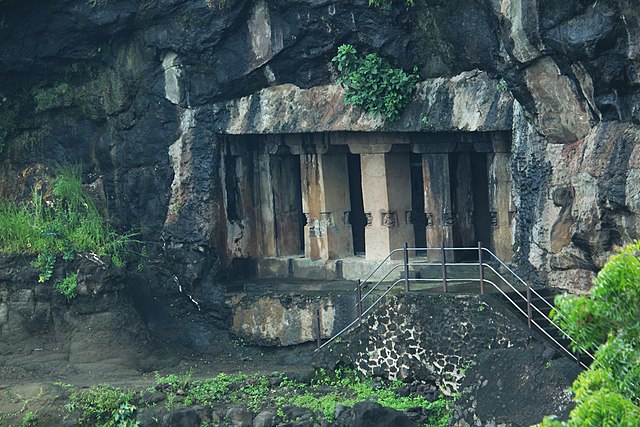Aurangabad is a city in the western Indian state of Maharashtra, famous for its rich cultural heritage and historic monuments. One of the most unique and lesser-known attractions in the city are the Aurangabad Caves, a series of rock-cut Buddhist shrines carved into the hills near Bibi Ka Maqbara. These caves, believed to be built between the 6th and 8th centuries, are a testament to the rich cultural and architectural heritage of the region.
Best trip From Sambhaji Nagar ( Aurangabad)
- 2D-1N Aurangabad To Pandharpur-Tuljapur Tour Package
- 2D-1N Parli Vaijnath-Aundha Nagnath-Mahudgad Tour From Aurangabad
- 2D-1N Aundha Nagnath-Parli Vaijnath Tour Package From Aurnagabad – Best Divine Journey
- 3D-2N Aurangabad To 3 Jyotirlinga-Shirdi Tour Package – Best Divine Journey
- 3 Jyotirlinga Temple Tour Package: 3D-2N Aurangabad to Grishneshwar, Trimbakeshwar, Bhimashankar
- 2D-1N Aurangabad to Trimbakeshwar-Shirdi Tour Package – Best Divine Journey
- 2D-1N Aurangabad To Trimbakeshwar-Vani Tour Package – Experience Spiritual Bliss
- 1 Day Aurangabad to Nashik Tour Package – Discover Spiritual Bliss
- 1 Day Aurangabad To Shirdi Tour Package – Best Spiritual Tour
- 1 Day Aurangabad To Ajnata-Ellora Tour Package – Best Experience The Marvels Of Ancient India
Introduction to Aurangabad Caves
The Aurangabad Caves are a series of 12 rock-cut Buddhist shrines carved into the hills near Bibi Ka Maqbara. These caves, believed to be built between the 6th and 8th centuries, are a testament to the rich cultural and architectural heritage of the region. The caves are known for their intricate carvings and sculptures, which showcase the artistic skills of the ancient Buddhist artists. Visitors to the caves will be amazed by the beauty and intricate detail of the sculptures, which depict scenes from Buddhist mythology and everyday life.

History of Aurangabad Caves
The exact history of the Aurangabad Caves is not known, but it is believed that they were built during the reign of the Vakataka dynasty between the 6th and 8th centuries. During this period, the region was under the control of the powerful Vakataka dynasty, which was known for its support of Buddhism. The caves were likely built as a way to promote Buddhism and provide a place of worship for the local Buddhist community.
In the centuries that followed, the Aurangabad Caves fell into disrepair and were forgotten. It was not until the 19th century that the caves were rediscovered and restoration work began. Today, the caves are a popular tourist attraction and are considered to be one of the hidden gems of Indian architecture. Visit during One day Aurangabad Local sightseeing By Private Cab
Features of Aurangabad Caves
The Aurangabad Caves are a must-visit for anyone interested in architecture and art. Visitors will be amazed by the intricate carvings and sculptures that adorn the walls and ceilings of the caves. The carvings depict scenes from Buddhist mythology, including images of the Buddha and other religious figures, as well as scenes from everyday life.
Another highlight of the Aurangabad Caves is the chaitya, a large hall-like structure that was used for communal worship. The chaitya is known for its ornate carvings and intricate stonework, which showcase the skill and creativity of the ancient Buddhist artists.
In addition to the chaitya, visitors can also explore the viharas, small cells that were used by Buddhist monks as living quarters. These cells are simple in design, but they offer a glimpse into the everyday life of the Buddhist community.
Importance of Aurangabad Caves
The Aurangabad Caves are important not only for their historical significance, but also for the insight they provide into the cultural and architectural heritage of the region. The caves are a testament to the artistic skills of the ancient Buddhist artists and the wealth of knowledge and creativity that was present in the region during this time.
In addition, the Aurangabad Caves are also important because they serve as a reminder of the rich cultural and religious heritage of India. With their intricate carvings and stunning architecture, they offer a unique glimpse into the history of Buddhism in India and the role that it played in shaping the cultural and architectural heritage of the region.
FAQs about Aurangabad Caves
Q: What are the Aurangabad Caves?
A: The Aurangabad Caves are a series of 12 rock-cut Buddhist shrines carved into the hills near Bibi Ka Maqbara in the city of Aurangabad, Maharashtra, India.
Q: When were the Aurangabad Caves built?
A: The Aurangabad Caves are believed to have been built between the 6th and 8th centuries during the reign of the Vakataka dynasty.
Q: What is the significance of the Aurangabad Caves?
A: The Caves are significant because they are a testament to the rich cultural and architectural heritage of the region, showcasing the intricate carvings and sculptures created by ancient Buddhist artists. They also serve as a reminder of the role that Buddhism played in shaping the cultural and architectural heritage of India.
Q: What can visitors expect to see at the Aurangabad Caves?
A: Visitors can expect to see intricate carvings and sculptures, including scenes from Buddhist mythology and everyday life, as well as a chaitya (a hall-like structure used for communal worship) and viharas (small cells used by Buddhist monks as living quarters).
Q: Is there an admission fee to visit the Aurangabad Caves?
A: Yes, there is an admission fee to visit the Caves. The exact fee may vary, so it is recommended to check with the local tourist office for the most up-to-date information.
Q: Are there guided tours available at the Aurangabad Caves?
A: Yes, there are guided tours available at the Caves. These tours are a great way to learn more about the history and significance of the caves, as well as to get an in-depth look at the intricate carvings and sculptures.



Comments are closed.